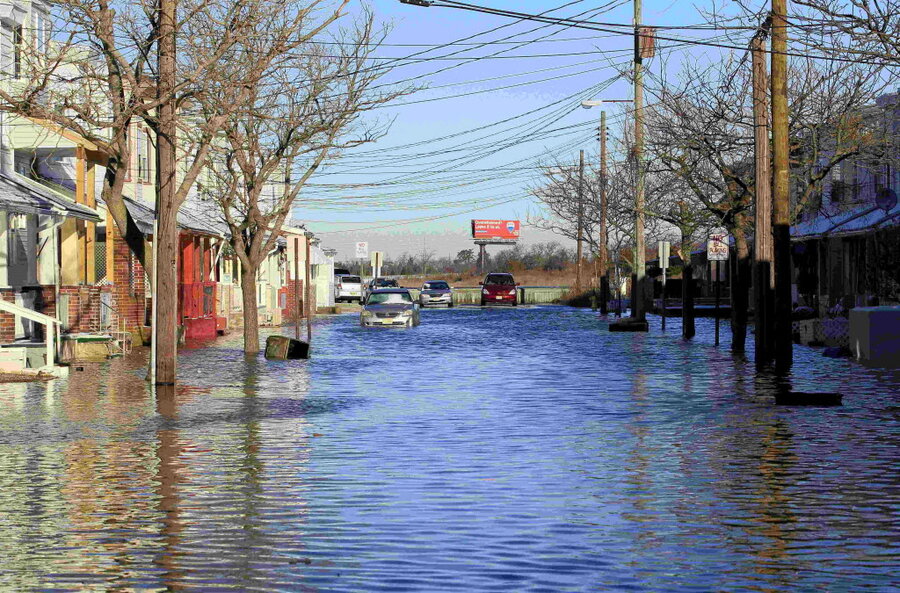Superstorms and surging seas: Is James Hansen a climate oracle?
Loading...
Is James Hansen the great climate scientist of our time? We better hope not.
A former NASA scientist, Dr. Hansen has been known to make climate predictions: both accurately, and before his time. In 1988, he told the Senate Energy and Natural Resources Committee that human activity was responsible for 99 percent of global warming. Such a remark would be less surprising now, but almost 30 years ago, acknowledging humankind’s role with such certainty was novel. Hansen shocked scientists and politicians with his unwavering confidence.
And in a study published Tuesday in the European journal Atmospheric Chemistry and Physics, Hansen shocked scientists again with a climate change assumption that challenges the status quo.
“The economic and social cost of losing functionality of all coastal cities is practically incalculable,” Hansen and his 18 co-authors explain in their study. “We suggest that a strategy relying on adaptation to such consequences will be unacceptable to most of humanity, so it is important to understand this threat as soon as possible.”
According to the authors, limiting global temperatures increase to 2 degrees Celsius above the preindustrial level is not enough. Because the last time the Earth warmed by this much – 120,000 years ago – the consequences were disastrous.
Put simply, Hansen argues that human’s heat-trapping gas emissions have led to temperature increases, which in turn have led land ice to rapidly melt. This melted freshwater has accelerated the melting of Antarctica and Greenland, which will eventually slow or shut off ocean currents that currently redistribute heat around the world, he says. And just like 120,000 years ago, sea level rose 20 to 30 feet and there were crazy storms. Storms powerful enough, for example, to throw giant boulders around in the Bahamas, says Hansen.
“First, our conclusions suggest that a target of limiting global warming to 2 °C, which has sometimes been discussed, does not provide safety,” Hansen and his co-authors explain. “Second, our study suggests that global surface air temperature, although an important diagnostic, is a flawed metric of planetary ‘health,’ because faster ice melt has a cooling effect for a substantial period."
“Third, not only do we see evidence of changes beginning to happen in the climate system, as discussed above, but we have also associated these changes with amplifying feedback processes,” add the authors. “There is a possibility, a real danger, that we will hand young people and future generations a climate system that is practically out of their control. We conclude that the message our climate science delivers to society, policymakers, and the public alike is this: we have a global emergency.”
A lot of climate scientists are predicting similar situations, but their predictions play out in centuries. Hansen’s predictions play out in decades.
So if Hansen is right, the world does have a global emergency. But whether or not the world starts planning now really depends on whether or not scientists and politicians believe Hansen this time around.
Michael Mann, a climate scientist at Pennsylvania State University, told The New York Times: “I think we ignore James Hansen at our peril.”






